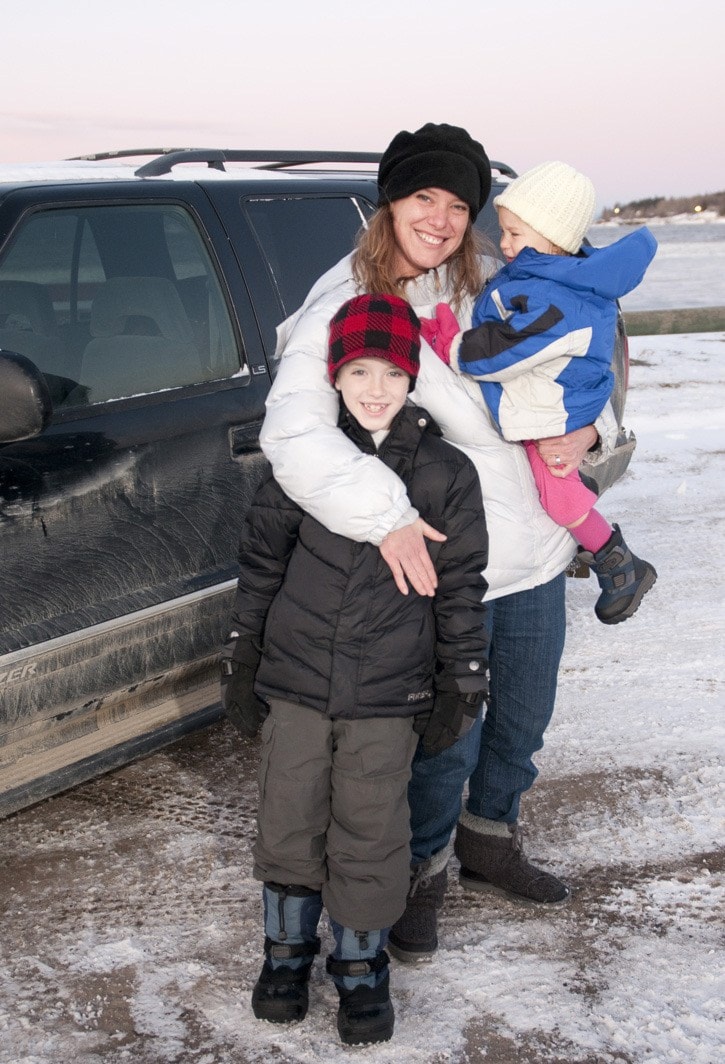Driving back and forth from Pinchi Road everyday, Gretchen Vogelsang has had her fill of close calls.
After one particular drive home with her two young children in the vehicle, Vogelsang had a “moment.” The working mother of two at first was overwhelmed with fear and anger at the danger she was putting her two children in driving the 30km commute back and forth to town everyday for work and school.
But then she began to think about the other drivers on the road, and she realized, if she was having these concerns, other drivers on the road may be having the same concerns, whether they are resource drivers or other domestic drivers like herself.
She decided to call a meeting, and seven days later, a room was filled with a few key stakeholders.
On November 22, Vogelsang had gathered a group of 15 interested parties, with herself representing a number of the other residents of Pinchi Road.
There were two representatives from the Ministry of Transportation and Infrastructure, two from Mt. Milligan, two from different mills representing logging truck drivers, a representative from Yellowhead Road and Bridge (YRB), Tom Greenaway from the Bulkley-Nechako Regional District, Councillor Brenda Gouglas, Mayor-elect Rob MacDougall, Staff Sergeant Thalhofer from the Fort St. James RCMP, two representatives from the local Ministry of Forests, Lands and Natural Resources, and Vogelsang herself representing some of the domestic driver interests.
The idea was to try and bring together the different sides to come up with a “code of courtesy” to allow the different drivers to be aware of what everyone’s needs are, so the many types of traffic could help create an awareness which would help make the road safer.
Vogelsang tried to make it clear she was not trying to point fingers, but wanted to try a fresh approach after feeling as though she had exhausted every other avenue open to her to improve the driving safety conditions on the North Road.
“I’m not in any way villifying anybody, these hard-working men and women have families that they want to go home to too,” said Vogelsang. “They’re out there to make a living and they deserve a safe space to do so, as I do to raise my family.”
In the past, Vogelsang had written numerous emails and phoned many different parties to complain about issues she had been having trying to drive the road everyday.
She said she was in contact with YRB, Nechako-Lakes MLA John Rustad, the Ministry of Transportation and Infrastructure, she had made contact with the transportation critic for the NDP, and District of Fort St. James Mayor Sandra Harwood as well.
When after none of this had worked and she had another terrifying experience on the road on her drive home, she decided to try approaching the problem from another angle.
“It came out of desperation,” she said.
The discussion at the meeting came up with two lists, one for the needs of resource drivers and one for the needs of domestic drivers.
“My ultimate goal is that within a few months we have some kind of a piece of paper that generally represents tire-on-the-road drivers,” said Vogelsang. She explained she was looking for practical things people driving area roads can do to help eachother and themselves stay safe.
The “code of courtesy” that would be created was not meant to be a binding document, only something to help awareness amongst the different types of drivers.
One suggestion at the meeting was more drivers having radios, to help keep in touch with other drivers.
“I have driven that road where I’ve heard truck drivers tell me to get out of the way because they were passing and if I didn’t have a radio, I would have been squished,” said Christie Smith of Mt. Milligan.
Greenaway then made the point the road is now being marketed as a connector road to tourists, so there will be more and more of these types of drivers on the road in the future, and they won’t have radios.
Ron Beauchesne with Dunkley Lumber agreed and said he didn’t want his drivers relying on what they hear on their radio to make unsafe decisions about how they can drive on the road.
“They should be assuming that there’s always somebody coming around the corner without a radio,” said Beauchesne.
There were also discussions regarding signage options, and Staff Sargeant Thalhofer made the recommendation signs be put up in spots to indicate high hazard or unsafe passing locations.
Trent Folk, district operations manager for the Ministry of Transportation said there were considerations with signage given the ministry tries to keep signage consistent across the province.
“It’s not as easy as just throwing up a sign on one road,” he said.
After more extensive discussion which included identification number location on vehicles, vehicle maintenance to clear muddy lights and windows, and other concerns, the beginnings of a “code of courtesy” were in place.
Vogelsang will be working on the document and emailing it out to the parties involved and collecting feedback and hopes the information will be disseminated throughout all area road users and applied to all area roads.
“We are not saying as domestic drivers we would like the resource traffic off this road, we love the resource traffic,” said Vogelsang. “It’s nice to see the people of this community working.”
However, she said the conditions as they exist, with funding, maintenance, and enforcement issues all combined with large volumes of traffic, a significant risk of a serious incident exists.
“If this kind of a civilian ... thing maybe just creates a little more awareness, I would just go to sleep a very happy woman,” she said.
